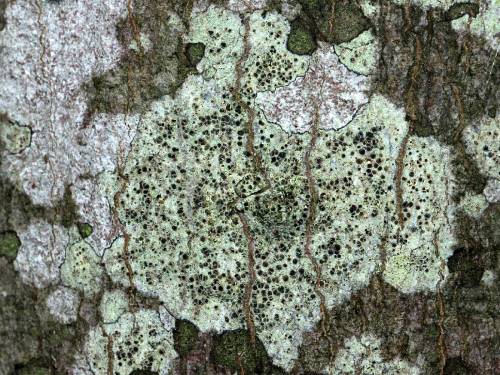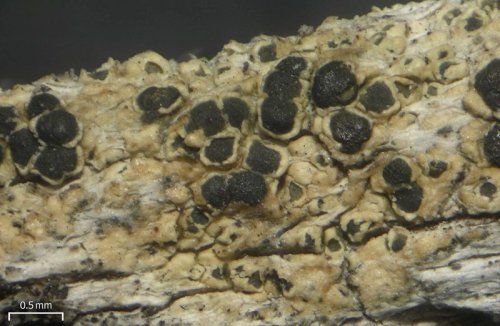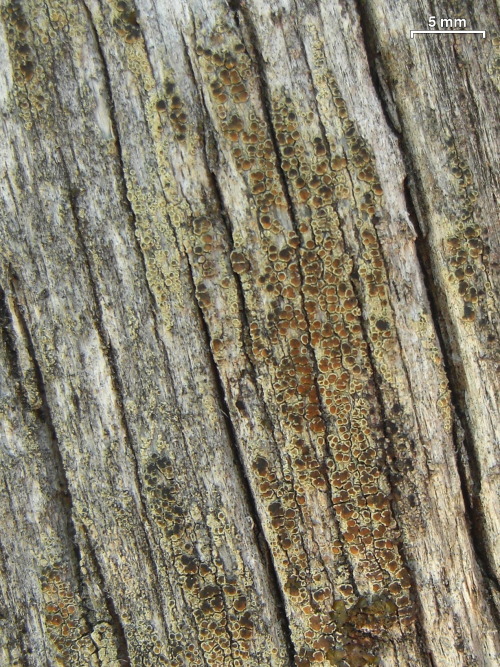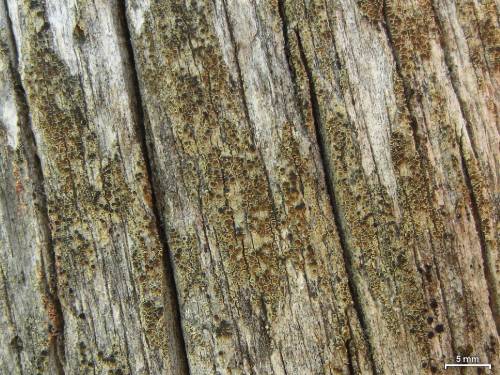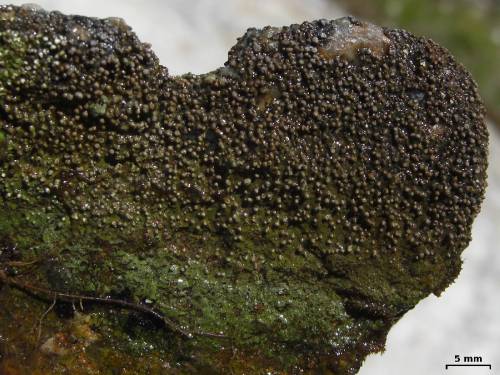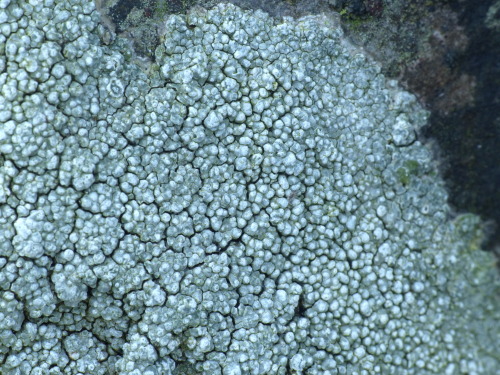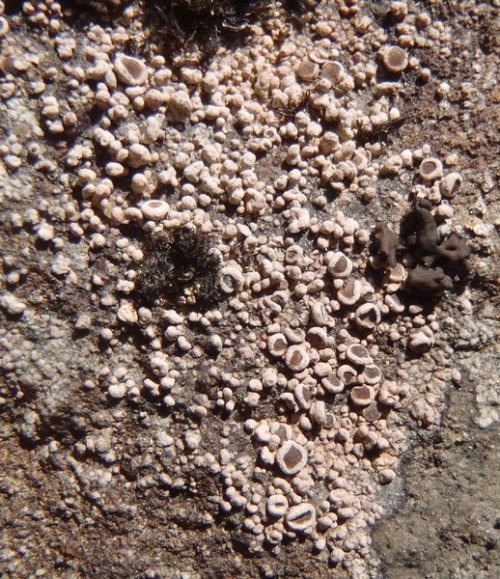#lichen subscribe
Lecanora mughicola
So often when I see the scientific names of lichens, I wonder if the people who named them bothered trying to say them out loud. I think mughicola sounds like a sneeze. Not necessarily a bad name, but maybe something easier to pronounce next time, ok guys? This crustose lichen has a glossy, beige-yellow, bumpy thallus. It produces apothecia with an undulating margin and orange-brown to dark brown discs which often appear paler due the a layer of chalky pruina. L. mughicola grows on the lignum (woody tissue under the bark) of conifers in boreal forests. It has been found in North America and Europe, but its range likely extends into northern Asia.
Post link
Koerberiella wimmeriana
And this time
We’re going to get *BUMPY*
K. wimmeriana is a crustose lichen with a gray or pink-gray thallus made up of rounded, bulbous protrusions. It produces cylindrical isidia, and brown-disked apothecia. It colonizes siliceous rock near water in sub-alpine areas of the northern hemisphere.
Post link







Phaeophyscia endococcinodes
Starburst shadow lichen
Being an American living in Germany, I do not have access to many of the snack foods and candies I grew up with, and they often slip my mind. So imagine reading the word “starburst” and remembering that Starburst candy exists out there in the world somewhere and you do not have access to it. Trying so hard to focus on this lichen but all I can think about are tiny chewy fruit cubes … Anyway, P. endococcinodes is a foliose lichen with a gray-brown to gray-green upper surface and frequent, black-disked apothecia. It grows on rock and occasionally bark in Africa, Asia, Europe, and North America. It has a characteristic red medulla (inner layer made up of fungal hyphae) which I imagine is the same color as a red starburst, which is probably the best original Starburst flavor, though I am partial to orange myself. Wait, lichens, yes. And this is how P. endococcinodes got its species name (“endo-” meaning inner and “coccin” meaning scarlet and “-odes” meaning to have the nature of).











